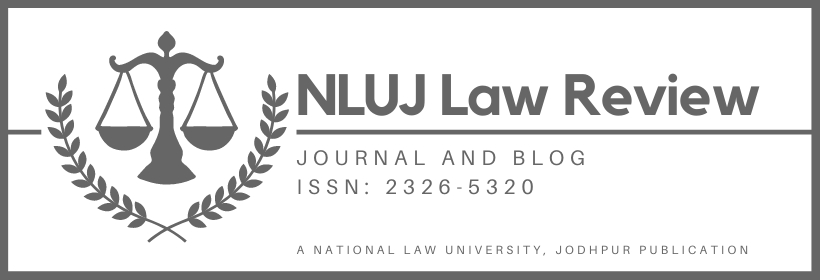In 2012 when Shri Bal Keshav Thackeray died, Mumbai mourned. Grief gripped the city. Instead of giving “grief, sorrow words”, as Malcom in Macbeth contended, the government went on to give “sorrow action”.As a sequitur, offices were shut, transportation was halted and most significantly freedom of speech and expression was restricted. These sullen and bedevil acts of the government to restrict fundamental rights formed the foundation of a now celebrated judgement of Shreya Singhal v. Union of India.
Today in the middle of a pandemic, the city of Mumbai is gripped with fear if not with grief, and the police, have again followed its infamous step of restricting freedom of speech and expression. This time it is by issuing a gag order (“the Order”). The Order was issued on 23rd May, 2020, by the Commissioner of Police, Greater Mumbai under Section 144 of the Code of Criminal Procedure, 1973 (“CrPC”). It states that, any person who disseminates any incorrect or distorted information on online platforms, which may incite panic or confusion, cause mistrust of public towards the government or fuel discrimination towards a particular community shall be punished under Section 188 of the Indian Penal Code, 1860 (“IPC”). Additionally, ¶4(iv) of the Order also prohibits any criticism of any action taken by the government functionaries to curb the spread of the virus. This Order, also holds the ‘admin’ of the online messaging group liable for dissemination of information, falling in the above stated category. Interestingly, the validity of the order was stated to be only till 8th June 2020.
The Order, even if intended to curb the dissemination of fake news, is drafted in such a way that it restricts critiquing or raising questions against the government. Although, the order is now no more effective, it has already drawn a big scar on the face of democracy, which was already in a ramshackle after the advent of the pandemic. This raises the question of constitutionality of this order. This blog argues against the gag order as being ambiguous, arbitrary, and unconstitutional.
The Constitutionality of the order
Article 19(1)(a) of the Constitution of India, guarantees freedom of speech and expression to all citizens and at the same time Article 19(2) imposes reasonable restrictions on the contours of this right on the grounds of security of the states, public order, decency and morality amongst others. These reasonable restrictions, as has been held by the Supreme Court (“SC”), must not be arbitrary, excessive, or beyond what is required in the interest of the public (Bishambhar Dayal Chandra Mohan & Ors. v. State of UP, ¶62). Therefore, if any law or regulation transgresses this scheme of restrictions, it shall be held unconstitutional. Two doctrines that are of vital importance in determining the constitutionality of any decision subverting freedom of speech and expression by the administrative arm of the State are the doctrine of proportionality and doctrine of imminent lawless action. The authors shall delve into these two doctrines to analyse the constitutionality of the Order.
Doctrine of Proportionality
The doctrine of proportionality or the “balancing test” is meant to check the ‘manifest imbalance’ of the measures taken by administration to achieve a particular object (Coimbatore District Central Co-operative Bank v. Coimbatore District Central Co-operative Bank Employees Association & Anr., ¶19). The doctrine states that the action taken by administration must not be irrational, unreasonable or contrary to law (Coimbatore District Central Co-operative Bank, ¶17). In the judgement of Internet & Mobile Association of India v. Reserve Bank of India (¶6.156) the Court referred Modern Dental College & Research Centre and arrived at a ‘4 point proportionality test’ to adjudicate the constitutionality of administrative actions. The 4 points were that (a.) the measure is designed for a particular propose, (b.) the measures are rationally connected to the fulfilment of the object, (c.) there is no alternative less invasive measure, and (d.) there is a proper relation between the importance of achieving the aim and the importance of limiting the right.
The Order fails to achieve the balance between restricting the rights and achieving the object. Firstly, it is a trite that dissemination of information on an online platform can happen from any part of the country. This is to say that if any false information has to be spread it can be done by anyone from any location. Thus, in that case, the Order fails to achieve its primary objective of curbing incorrect information, because it applies only to the residents of Mumbai. Secondly, to ensure that people get correct information in these testing times, the authority could have taken upon itself to circulate correct and authentic information however, that has also not been undertaken. Thus, instead of looking at a possible alternative, the police have chosen to transgress the fundamental rights. Thirdly, no rationale has been argued as to why and how the admins of messaging groups will be held liable for the messages circulated, because admins cannot have complete control over what is sent in the group by people sitting in any part of the country or world. Lastly, the order provides no exception to journalists and other social activists who act as bulwark against the unconscionable activities of the government.
Thus, it can be conclusively stated that authorities failed to assess existence of any alternative mechanism, (Anuradha Bhasin v. Union of India, ¶17) and went on to impose a blanket ban so much so to restrict criticism of government by journalists as well.
Doctrine of Imminent Lawless Action Test
The doctrine of imminent lawless action testis a successor of the doctrine of clear and present danger test and was laid down by the U.S. Supreme Court in the judgement of Brandenburg v. Ohio (1969). This test was made law of the land in India by two SC Judgements of Sri Indra Das v. State of Assam and Arup Bhuyan v. State of Assam. The test lays down that “the constitutional guarantees of free speech and free press do not permit the State to forbid or proscribe advocacy of the use of force or of law violation, except where such advocacy is directed to inciting or producing imminent lawless action”.
In the present case, when the order restricts dissemination of information that can cause mistrust against the government, it cannot be classified as situation of imminent lawlessness to the community. Messaging on social media may highlight some of the pressing issues such as lack of beds in hospital which can push the authorities to work properly. Even if it is argued that there are chances of spreading false news, it cannot be classified as a mingling danger to the interest of community so much so that a blanket ban needs to be imposed on the freedom of expression. The Greater Mumbai Police could have used other methods to address real objective, instead of issuing such order which can infringe the fundamental rights of the people and media at large.
Existence of other laws
Sec. 144 of CrPC, under which this order was issued, is considered a draconian provision whose constitutional validity has been challenged multiple times. Nonetheless, the SC in 7-judge Constitutional bench has upheld its validity. The Court in the judgement of Anuradha Bhasin has noted that order passed under sec. 144 has direct implications upon the fundamental rights of the citizens. Therefore, such power must not be used repetitively, casually and in a cavalier manner (Anuradha Bhasin, ¶137). Additionally, the Court observed that under the law, Magistrate is duty bound to ensure that restrictions are not excessive and alternative options must be resorted (Anuradha Bhasin, ¶133).
On this note, the question arises – do the authorities and the State have sufficient laws to manage the flow of correct information and punish those who ring false alarm? Section 505 of the IPC prohibits any person from spreading rumours or inciting enmity and hatred against any specific community. Further, Section 54 of the Disaster Management Act, 2005 punishes for raising or circulating false alarm.
Thus, based on these two provisions, it can be concluded that there already exist laws to deal with the situation and the order issued by the police being a scarecrow is clearly a misuse of power, which does not comply with the observations made by the Apex Court.
Conclusion
The gag order issued by the Mumbai Police attempted to restrict action, speech, and utterance against the government and its actions, even at a time when true democracy is at test not only in Mumbai but also in India and across the globe.
Conclusively, the Order fails to satisfy basic conditions of reasonable restrictions as mentioned under Article 19(2), and also lacks in its spirit to achieve the intended goal. Thus, it can be said that the order is arbitrary, vague, and unconstitutional. The government and its administrative arm must refrain from issuing such orders which may have negative ramifications on the fundamental rights of people. However, if the situations demand issuance of any such order they must issue it while balancing the rights of its citizens. Nonetheless, the matter is in hearing before the Hon’ble High Court of Bombay and the authors believe that the Court will take correct stance to adjudicate the veracity of this order.
This article has been authored by Kapil Shrivastava and Nikunj Maheshwari, student at Institute of Law, Nirma University, Ahmedabad.



